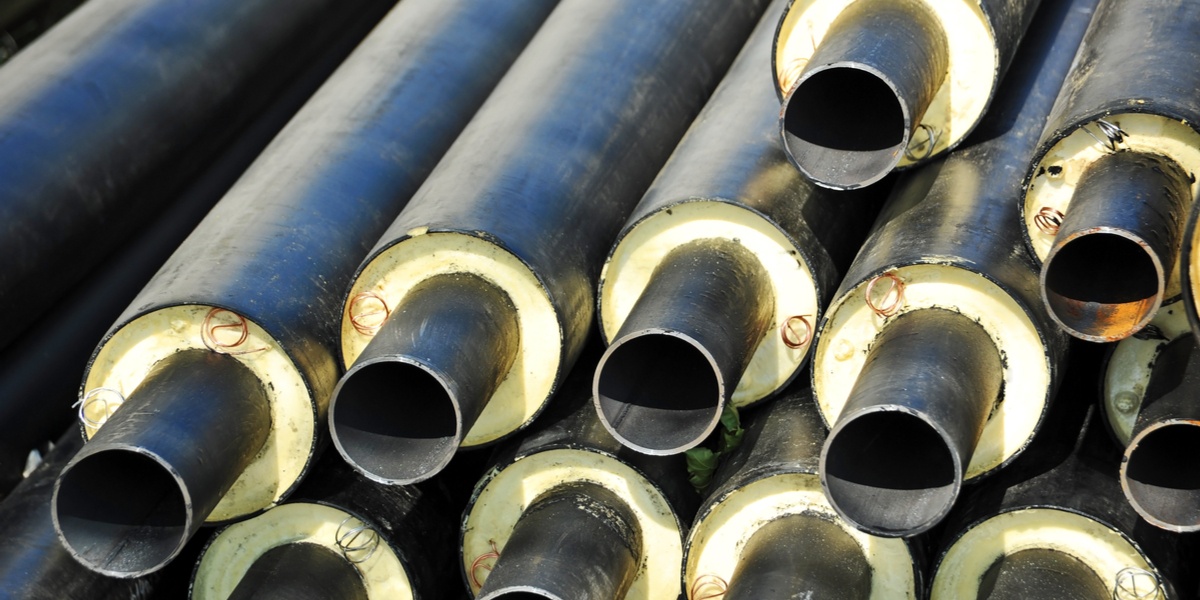What is Electric Heat Tracing?

When piping is exposed to very low temperatures, there is a risk that the fluid inside may be frozen, especially when movement is slow or intermittent. Note that freezing can happen naturally due to cold weather, on in applications where certain areas must be kept at low temperatures with refrigeration. Freezing can be prevented with electric heat tracing, which consists of installing cables along the piping to provide resistance heating.
Heat tracing is not limited to freeze prevention. The concept can also be deployed in applications that require water or another fluid to be kept above a specified temperature, even when there is no risk of freezing. Also note that some industrial piping systems carry fluids that freeze at room temperature, making heat tracing necessary.
Many types of heat trace cables are commercially available, and they are selected based on insulation material, voltage, and heat output per unit length. Normally, one foot of cable is installed for each foot of piping, but additional cable may be required to compensate for localized heat loss due to components such as valves and flanges.
Prevent freezing in your plumbing system with electric heat tracing.
Electric heat tracing is also known as surface heating or heat tape. It is important to note that heat tracing is not limited to pipes, but also vessels. Heat tracing can also be deployed with Steam, although it is only viable when clients have access to Steam at a reasonable cost.
How An Electric Heat Tracing System Operates
The output of a heating element based on electrical resistance can be described with a simple formula:
- Heat Output (Watts) = I2 R
For example, if you double the resistance while keeping the current constant, heating increases by 2. On the other hand, if you double the current keeping the same resistance, the conductor dissipates 4 times more heat.
Electric heat tracing uses cable designed to provide constant wattage per unit of length, to have uniform heating along pipes. Insulation is applied on all sides except the direction of the pipe, to concentrate the heat output towards the fluid inside. The following are some common applications of electric heat tracing:
- Freeze protection for commercial or industrial piping systems
- Temperature maintenance for domestic piping systems
- Melting snow in outdoor walkways and roads
Electric heat tracing often uses many cables around the pipe to provide heat flow from all directions. This configuration also increases reliability, since heating can continue even if one of the cables is damaged, providing time for maintenance personnel to perform the required reparations.
Modern electric heat trace cable has a self-regulating design, which adjusts the heat output as needed. Conductive elements are embedded in a polymer that expands and contracts in response to temperature:
- When temperature drops and the polymer contracts, more conductive pathways are created and resistance is decreased. Current through the heat tracing cable increases and more heat is released as a result.
- The opposite process occurs when temperature increases: the polymer expands, conductive elements separate and increase resistance, current decreases, and less heat is produced.
Electric heat tracing can also be equipped with a control and monitoring system, allowing programmed heating sequences, alarms, and notifications.
Heat Trace Cable: Classification and Selection
Heat trace cable is selected based on the circuit length required and the operating temperature. The combination of these factors determines which type of cable is the most suitable.
- Self-regulating polymer jacketed cables are normally used for temperatures up to 200°C and circuits of up to 750 feet.
- Mineral insulated cables are suitable for up to 650°C and 3,300 feet.
- Skin effect heating systems are intended for applications with much longer heating circuits, reaching up to 82,000 feet (25 km). They are typically rated for up to 250°C.
Like many other building systems, electric heat tracing is subject to standards from organizations such as CSA, FM, IEEE, and NFPA (National Electrical Code). Although heat trace cable is normally applied to existing piping systems, there are also pre-assembled solutions that include the pipe, cable, and insulation.

Sanket Abhang
Sanket Abhang is a Plumbing and Fire Protection Design Engineer who holds a Mechanical Engineering Degree from the University of Mumbai, India. Recent projects include Community Access, Jackson Avenue, 330 Grand Street and many private residences & commercial kitchens.
Related Posts
Join 15,000+ Fellow Architects and Contractors
Get expert engineering tips straight to your inbox. Subscribe to the NY Engineers Blog below.



